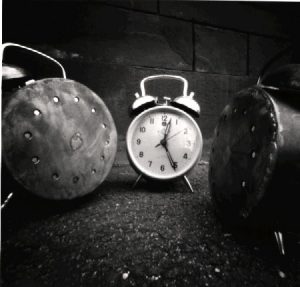The other night I went to hear David Levithan read from The Lover’s Dictionary at Annie Bloom’s Books. The Lover’s Dictionary is, as you may know, a novel in the form of dictionary definitions. It was an excellent reading from a concise and elegant book. The book is especially well-suited to readings, since each entry is complete in itself while simultaneously contributing to the larger story. He’s now working on a collaboration with a photographer friend. The friend is sending him photographs and he’s constructing a narrative therefrom.
It got me thinking about how much can fall into place about a story if you ruthlessly constrain its elements. Holly Black has a great set of questions for fantasy writers to ask themselves about magic, nicely adapted by Jo Knowles to apply to power dynamics in contemporary realistic stories. When you answer the questions, you have to think a lot about the limits, price, and consequences of magic and/or power.
Some other things you can constrain:
Duration. Your book can cover a season (Empress and Rules each take place over a summer), or a single night (David Levithan and Rachel Cohn’s collaborative Nick and Nora’s Infinite Playlist).
Location. Think like a low-budget movie or theater director. Imagine that every place you set a scene costs you money. How few settings can you get away with?
Number of characters. Again, pretend you have to pay these people, because in a way you do: with your time, in figuring out how they all relate to each other and advance the story. How many do you need? Really? Are you sure?
Cultural norms. Constraining cultural norms works great for designing dystopias. Think of Lois Lowry’s The Giver, or more recently, Ally Condle’s Matched.
Hold on, Sara, you say, aren’t you just talking about making choices about the kind of story you’re telling? Why do you keep calling them constraints?
Because making choices can be terrifying. But when you think of what you’re doing as limiting your choices from the vast universe of narrative possibilities to a manageable set, it can get easier. You’ve built the frame; you’ve ground the lens.


Alain
February 7, 2011 at 8:46 pmThe constraints can work in all kinds of way, not just in limiting “sets” or numbers of people. You can be forced to use certain sets or forced to use at least 1 market crowd with 12 persons and and at least 1 unruly mob with forty persons, etc. I met a theater director/playwright/actor who told me that when he was submitting scripts for a certain national theater he knew he had a better chance of getting any one of them accepted if there was at least one crowd scene. The National theatre bureaucrats absolutely had to spend their pre-defined budget for extras for each production. It made for some interesting writing.
Sara
February 8, 2011 at 8:32 pmOh, that’s fascinating! I love it: The Obligatory Unruly Mob.